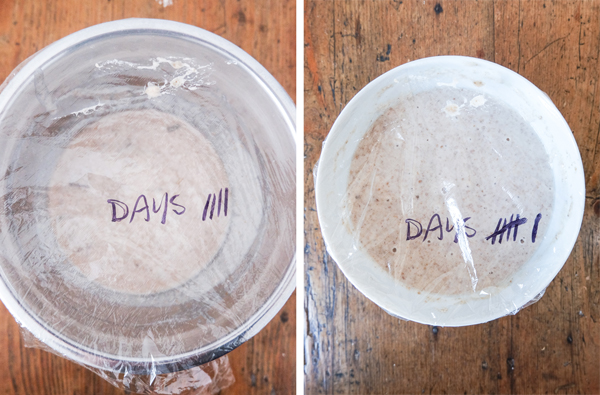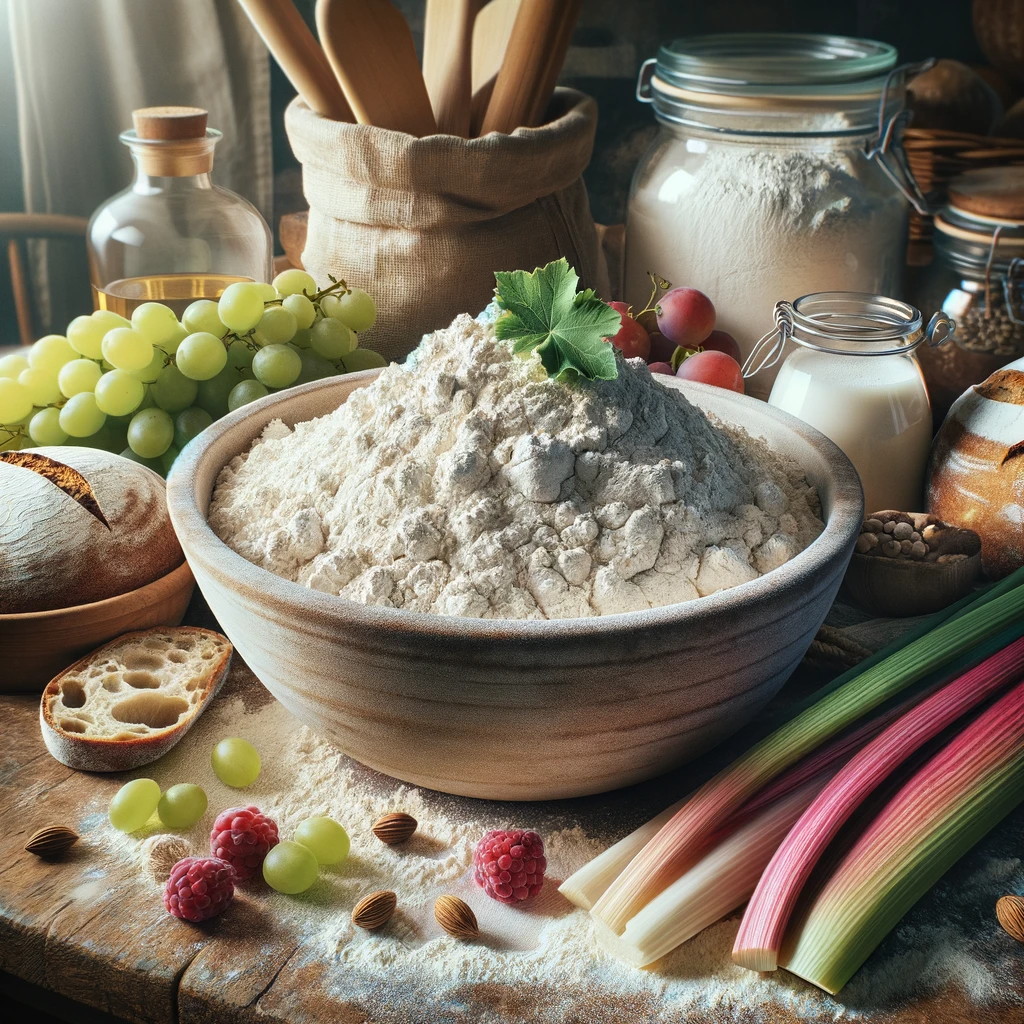I recently had a conversation with someone about sourdough bread. It all started when I mentioned I was a baker. He told me that there was a bakery near him that sold sourdough, but he didn’t know what it was or what all the fuss was about. I was quite happy to explain as I love talking about baking science.
See, sourdough isn’t a new thing. Despite its recent popularity, sourdough is what all bread used to be back in the day. Before breweries developed the commercial yeast that we now use today, the only kind of yeast we had was wild! Wild yeast is everywhere… in the air, on the walls, etc. – all you need to do is provide it with food, and water to let it grow!


They say Egyptians first discovered how to bake bread – someone left a bowl of a porridge-type dish (made of wheat) lying around and discovered it started bubbling. I love the idea of whoever thought “Let’s put this in an oven!” And since that day, we have been raising cultures of wild yeast to add air and flavour to our breads.
So, do you want to make your own starter? You can go about it two different ways – first, you can make one out of just flour and water, or you can use fruit and vegetables! Unwashed fruit contains lots of wild yeast on the surface, plus plenty of sugar inside to feed the yeast culture. Grapes are an obvious choice, but really any fruit and certain vegetables will do (apparently beets work).
In my copy of Justin Gellatly’s Bread, Cake, Doughnut, Pudding, I found a starter recipe that used rhubarb! As I had let my last starter die, I thought I might give this one a shot! I had some leftover rhubarb to use up and figured why not? Not only does the rhubarb add food for the yeast, but it brings its own sour flavour to the starter.
The one thing to consider when using the different starters in a recipe is the water content. Some starters have a higher water ratio than others and will impact your recipe. If the recipe has its own starter recipe, do the calculations to determine the ratio. If your own starter is different, then you’ll have to adjust the amounts to match.
I normally like to keep my starter at a 50/50 ratio to keep things simple, but Justin’s rhubarb recipe came out just a little on the dry side. As I was planning on trying out his sourdough bread recipe, I didn’t bother adjusting the ratio. But in the future, I will feed it 50/50. That way I can add my starter to any recipe and keep my mental math to a bare minimum. I’ll also use only white bread flour, as I prefer it for flavour.
So if you want to make your own starter, why not try one of these?
The Kitchen Basic Sourdough Starter
(One of my favourites – the recipe link has great explanations)
- 440g all-purpose flour (divided)
- 440ml water (divided)
Day 1: Make the initial starter by mixing together 110g flour and 110g water. Stir into a smooth batter, scrape down the sides, and cover loosely with cling film. Leave out at room temperature overnight.
Day 2: Feed the starter by adding another 110g flour and 110ml water to the mixture. Mix well, scrape down the sides, and cover again with cling film. Leave overnight at room temperature.
Day 3: Feed the starter again, just as day 2. You will probably see bubbles by now, and the starter will begin smelling a bit sour, like vinegar.
Day 4: Feed the starter again, just as before. Your starter should definitely smell sour by now. Don’t worry if there is lots of liquid on the surface, but simply mix it all in.
Day 5: Starter is ready to use. You can bake with it today, or place it in the fridge until you need it. Remember to feed about once a week, by removing about half the starter and then feeding it to replace the amount lost. Keep the ratio 50/50 between flour and water unless you intend to alter your starter’s consistency.
Sourdough Starter Made with Grapes
- 120g unwashed, organic grapes
- 480g all-purpose flour (divided)
- 360+ water (divided)
Day 1-2: Mash the grapes thoroughly in a container, cover with cling film, and leave at room temperature for 48 hours.
Day 3: Strain the grapes to remove the juice, and add enough water to equal 120ml. Mix in 120g flour, cover loosely with cling film, and leave at room temperature overnight.
Day 4-5 (same for both days): Feed the starter by adding 120g flour and 120ml water. Mix thoroughly, cover with cling film, and leave at room temp. overnight.
Day 6: Your starter is ready to use. You can bake with it today, or place it in the fridge until you need it. Remember to feed about once a week, by removing about half the starter and then feeding it to replace the amount lost. Keep the ratio 50/50 between flour and water unless you intend to alter your starter’s consistency.
Rhubarb Sourdough Starter (Justin Gellatly – Bread, Cake, Doughnut, Pudding)
(When I made this, I didn’t use rye flour and instead substituted it with more white or whole wheat. It’s up to you what flour you use for flavour. I also didn’t discard as much as I wanted to build a bigger culture.)
- 30g rhubarb, thinly sliced
- 500g water (divided)
- 285g white bread flour (divided)
- 185g wholegrain rye flour (divided)
- 60g wholemeal bread flour (divided)
Day 1: Place the rhubarb in a bowl with 100ml water, 50g white bread flour, and 50g rye flour. Mix together into a paste, cover loosely with cling film, and allow to rest at room temperature overnight.
Day 2: Mix in 50ml water, 25g white bread flour, and 25g rye flour. Cover, and allow to rest at room temp. overnight as before.
Day 3-4: Same as day 2. You should see fermentation starting.
Day 5: Pour 30g of the starter into a new clean container. Pick out any pieces of rhubarb (it’ll be mostly broken down now), and discard them. Whisk in 125ml water, 80g white bread flour, 30g rye flour, and 30g strong wholemeal flour. Discard the rest of the starter (I know, wasteful).
Day 6: Same as day 5.
Day 7: The starter is ready to make bread! You can bake today, or refrigerate until needed. Feed with whatever ratio you want, about once a week.
